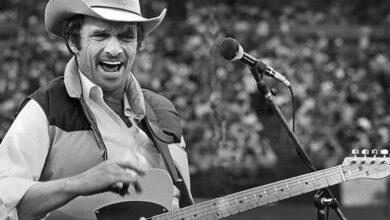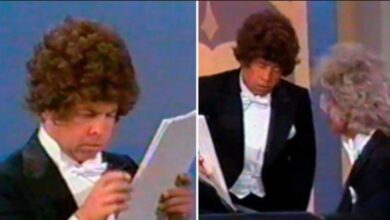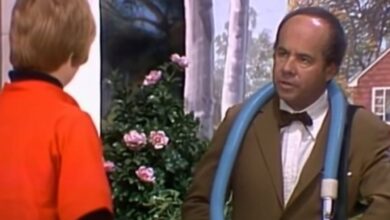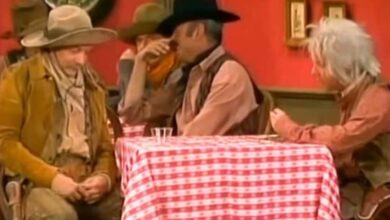Ronnie Milsap’s “It Was Almost Like a Song” United Country and Pop Worlds in 1977
When Ronnie Milsap unveiled “It Was Almost Like a Song” in 1977, it didn’t just mark another hit — it redefined the relationship between country and pop. The track became a landmark in his career, ascending to No. 1 on the Billboard Hot Country Songs chart while simultaneously breaking into the mainstream. It reached No. 16 on the Billboard Hot 100 and climbed to No. 7 on the Adult Contemporary chart, proving its ability to captivate audiences far beyond traditional country borders.
Born in Robbinsville, North Carolina, in 1943, Ronnie Milsap overcame congenital blindness to become one of country music’s most accomplished crossover artists. Raised by his grandparents, he attended the State School for the Blind in Raleigh, where he first discovered his deep connection to music. There, he mastered instruments like the piano and violin, drawing influence from gospel, classical, and R&B — a blend that would later shape his genre-defying sound and his ability to make songs like “It Was Almost Like a Song” universally relatable.
The origins of the song trace back to the partnership between composer Archie Jordan and lyricist Hal David. Jordan, a young talent at the time, had written the melody but sought lyrical direction. When paired with David — already a legend for his work with Burt Bacharach — something extraordinary took form. Together with producer Tom Collins, they built a story around fleeting love, memory, and emotional release. It wasn’t just another love song; it was a reflection on how moments can slip away yet still echo like music in the heart.
Recorded in April 1977, the track featured Milsap and Tom Collins co-producing a sound that perfectly balanced Nashville warmth with pop sophistication. Strings swelled gently behind the steady rhythm section, while Milsap’s heartfelt piano carried the melody. The production merged lush pop arrangements with country sincerity — a combination that elevated the song beyond genre limitations and gave it a cinematic quality rare for its time. It sounded both intimate and grand, like a personal confession set to an orchestral backdrop.
When the song was released that May, it caught fire almost instantly. Critics praised its emotional honesty and sleek production, and listeners embraced its universal themes. It became Milsap’s eighth No. 1 country hit and his first major crossover success, resonating on radio stations that rarely played country acts. The accompanying album, also titled It Was Almost Like a Song, reached No. 3 on the Country Albums chart and entered the Billboard 200, eventually earning Gold certification and winning “Album of the Year” at the 1978 CMA Awards.
Beyond its chart performance, the track reshaped the boundaries of country music. It proved that heartfelt storytelling and polished production could coexist without diluting authenticity. The song became an emblem of what was possible when Nashville looked outward, paving the way for future artists like Kenny Rogers and Dolly Parton to experiment with crossover appeal. Country-pop wasn’t just a trend — it became a movement, and Milsap’s song was one of its earliest blueprints.
For Ronnie Milsap himself, this song was a transformation. Suddenly, he was no longer confined to the country airwaves — pop and adult contemporary radio welcomed him, bringing his voice to audiences who might never have discovered him otherwise. His concerts grew larger, his invitations more prestigious, and his artistic freedom expanded. “It Was Almost Like a Song” wasn’t just his hit; it was his passport to the wider world of American music.
The song’s influence rippled far beyond Milsap’s discography. It encouraged other country artists to explore the edges of their sound, inspiring a generation to mix steel guitars with string sections, and twang with tenderness. The result was a new era of crossover success that dominated radio well into the 1980s and 1990s. Its commercial triumph also proved to record labels that emotional storytelling — regardless of genre — could move mountains when paired with great production and genuine delivery.
Over the years, “It Was Almost Like a Song” has been revisited by numerous artists, including Dionne Warwick and The King’s Singers, each version unveiling a new layer of its emotional core. These renditions reflect its timeless composition and universal resonance. Whether sung with orchestral grandeur or intimate simplicity, the melody carries the same bittersweet ache — that fragile space between love and loss that defines so much of Milsap’s artistry.
By 1977, Ronnie Milsap was already a respected country star, but this song elevated him to a level few had reached — one foot in Nashville, the other on the pop charts. Awards followed, including Grammys and industry recognition that solidified his reputation as a musical bridge-builder. The Country Music Hall of Fame would eventually honor him, not just for his voice or piano skills, but for expanding the vocabulary of country music itself.
Decades later, the legacy of “It Was Almost Like a Song” remains intact. It continues to resonate on classic country and soft rock playlists, a testament to Milsap’s emotional clarity and genre-crossing finesse. Younger artists still point to it as an example of how vulnerability and melody can unite worlds. The song’s blend of passion and precision feels as relevant today as it did in 1977 — a timeless reminder that music, when honest, transcends every border.
Looking back, “It Was Almost Like a Song” stands as both a milestone and a mirror — a reflection of how courage and creativity can rewrite the rules of an entire genre. It wasn’t merely a chapter in Ronnie Milsap’s career; it was a cultural shift. In fusing the storytelling heart of country with the polish of pop, Milsap didn’t just bridge two worlds — he built a lasting highway between them.





